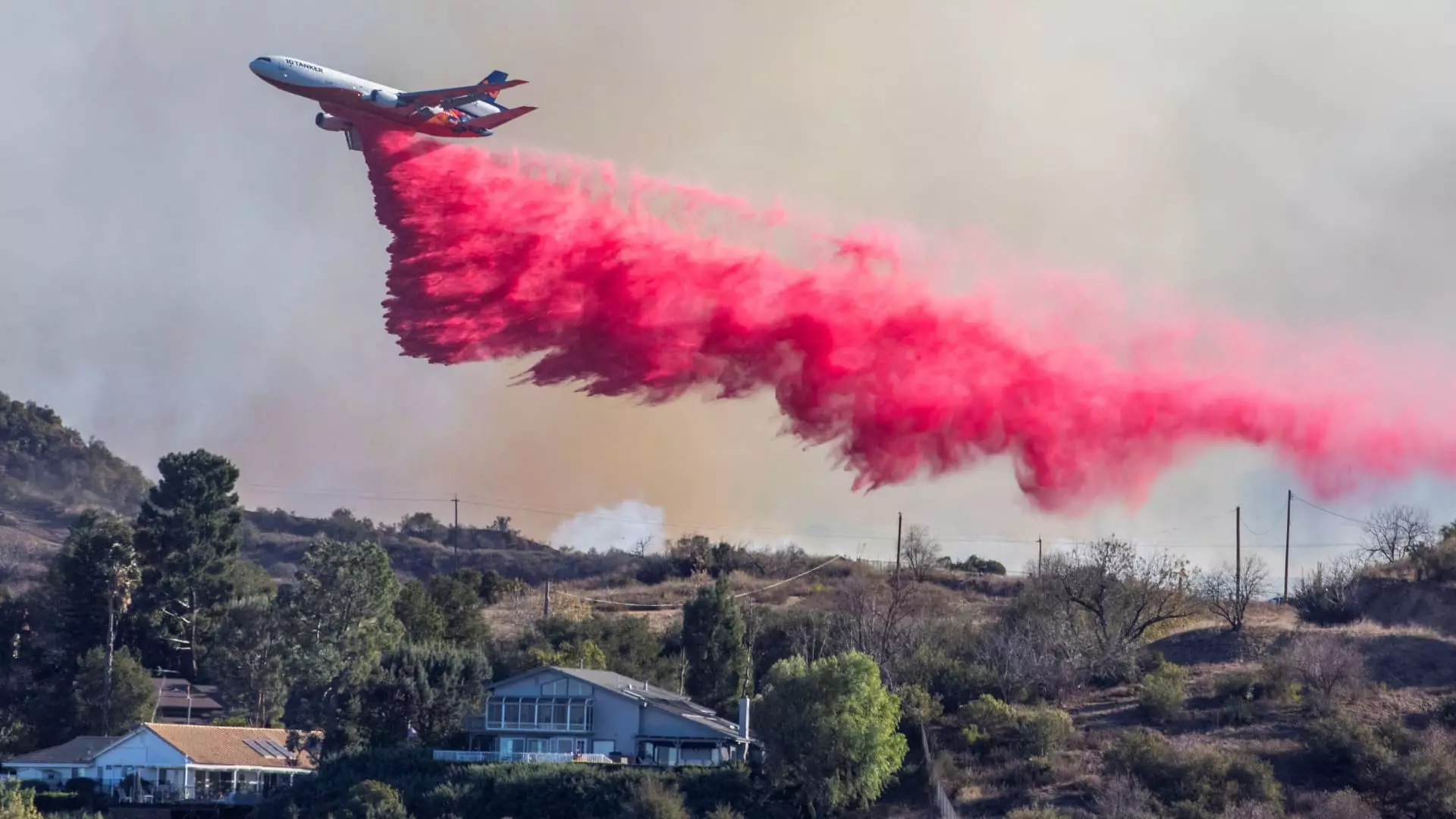In recent years, the increasing frequency and intensity of wildfires across the globe, particularly in regions like California, have raised alarms about the effectiveness of firefighting strategies. As observed in the recent wildfires threatening Los Angeles residents, aerial firefighting has emerged as a critical component of wildfire management. The situation has escalated to the point where even in the so-called “off-season,” aerial firefighting companies scramble to deploy their resources to combat raging fires that threaten communities and ecosystems alike.
The Aerial Firefighting Landscape
The U.S. has one of the largest civil fleets dedicated to aerial firefighting, managed by various entities including government agencies and private companies. The California Department of Forestry and Fire Protection (Cal Fire) boasts over 60 firefighting aircraft, ranging from airplanes to helicopters. Yet, this fleet is often supplemented by the private sector, which maintains its own specialized aircraft fleets. Joel Kerley, CEO of 10 Tanker Air Carrier, highlights the duality of reliance on both public and private resources to combat wildfires effectively. Companies like 10 Tanker, equipped with converted DC-10s, are under significant pressure to respond during emergencies, particularly during the months that are traditionally considered the off-season for wildfires.
The trend towards longer wildfire seasons is alarming. Organizations such as the United Nations Environment Program anticipate that wildfires will be more frequent and damaging as climate change progresses. In light of this, the U.S. Forest Service has expanded contracts with aerial firefighting firms to better prepare for the rising tide of wildfires. In 2023 alone, the Forest Service extended a $7.2 billion contract over a decade for this purpose, underlining the urgency and commitment to aerial firefighting capacities. Despite these contracts, there is a growing consensus among industry experts that the available air tankers are insufficient to meet the surging demand for firefighting assistance.
The Complex Nature of Wildfires
Among the most notable challenges faced by firefighters are the conditions under which wildfires occur. For example, the Palisades and Eaton fires that devastated parts of California were complicated by extreme winds, creating dangerous and unpredictable fire behavior. These fires resulted in significant loss of life and property, demonstrating the devastating impact of wildfires. Companies like 10 Tanker have mobilized quickly to these emergencies, with their aircraft dropping vast quantities of fire retardant—over 273,000 gallons in these instances—to contain the fires effectively.
Challenges of Resource Allocation
Despite the seeming abundance of aerial firefighting resources, logistical challenges often hinder response efforts. During peak fire seasons, many aircrafts are already committed to routine maintenance or are being prepared for deployment. Sam Davis, CEO of Bridger Aerospace, emphasizes the importance of maintaining a fleet in ready condition at all times, noting that even during off-seasons, demands remain high due to ongoing dry conditions. Such operational hurdles can mean that aerial firefighting units are not fully equipped to respond immediately when disaster strikes.
The development of new firefighting aircraft is another saga within this narrative. The conversion of commercial airplanes into firefighting tankers is no small feat, often taking years to complete. Companies are working to modify older aircraft, but the process is complex and costly. This has prompted industries to seek newer designs that can better meet the rigors of firefighting. The DHC-515, currently in development, will incorporate advanced features aimed at enhancing performance and efficiency—crucial elements for aerial refueling in high-stress environments.
The escalating threat of wildfires, exacerbated by climate change, calls for an urgent reevaluation of current firefighting strategies. As aerial firefighting plays an increasingly significant role in managing these crises, there must be a concerted effort to enhance the capabilities and number of air tankers available. The industry will require foresight and innovation to keep pace with the demands of an evolving wildfire landscape. With the collaboration of both public and private sectors, there is potential for more robust and effective approaches to combat wildfires, ultimately safeguarding lives, properties, and natural ecosystems threatened by this relentless force of nature.

